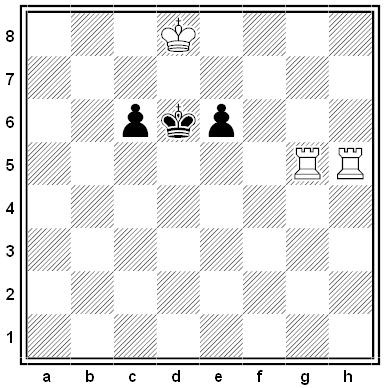“The Bible tells us to love our neighbors, and also to love our enemies; probably because they are generally the same people.” — G.K. Chesterton
Hat Check
One hundred people stand in a line, all facing in the same direction. Each is wearing a red or a blue hat, assigned at random. Each person can see all the hats before him in the line, but not his own or those of the people behind him. Starting at the back of the line, each person in turn must guess the color of his own hat. Each person can hear all the prior guesses. If the group are allowed to discuss strategy beforehand, how many can be sure of guessing correctly?
Ill-Favored
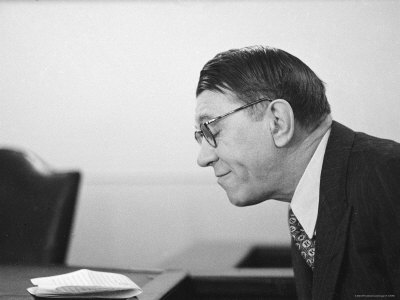
New Yorker founder Harold Ross was a brilliant magazine editor, but his personal appearance was distinctly unprepossessing. “His hair sticks straight up, his teeth stick straight out, his eyes slant, and his expression is always that of a man who had just swallowed a bug,” wrote Ogden Nash. Alexander Woollcott said he looked like a dishonest Abe Lincoln.
Staff member Janet Flanner remembered, “His face was homely, with a pendant lower lip; his teeth were far apart, and when I first knew him, after the First World War, he wore his butternut-colored thick hair in a high, stiff pompadour, like some gamecock’s crest.”
Indeed, Ross’ first wife said he was the homeliest man she’d ever met. “There was certainly a mismating of his head, his hands and his feet to his gaunt, angular body; his hands, though he learned to use them gracefully, were too large; so were his feet, and his ears and his mouth were also oversized; his tongue was a real problem and he was really more comfortable when he let it hang over his loose lower lip, as he did when he was relaxed or was thinking hard.”
At least it gave fodder to his friends. At a poker game, Franklin Pierce Adams announced that he’d just seen Harold Ross toboganning.
“For God’s sake — Ross toboganning!” said George S. Kaufman. “Did he look funny?”
“Well,” Adams said, “you know how he looks not toboganning.”
Ship of State
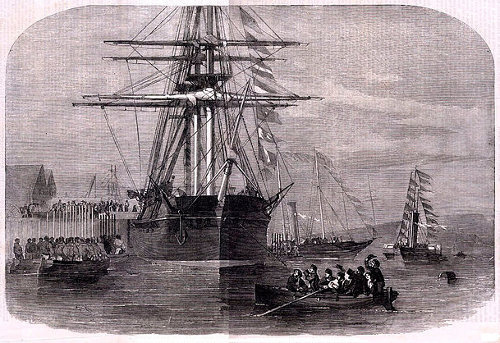
In 1855, American whaler James Buddington came across an abandoned vessel stuck in the ice off Baffin Island in northeastern Canada. It was HMS Resolute, a British exploration ship that had been abandoned two years earlier and drifted rudderless through 1200 miles of the Canadian Arctic.
The U.S. Congress returned the ship to Queen Victoria, and in 1879 its timbers were made into two desks with admirable pedigrees: One resides in Buckingham Palace … and the other is in the Oval Office, where it’s been used by almost every president since Rutherford B. Hayes.
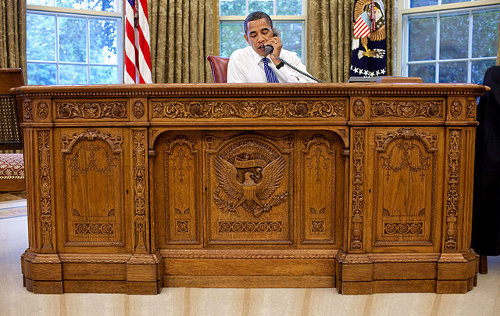
Turnabout
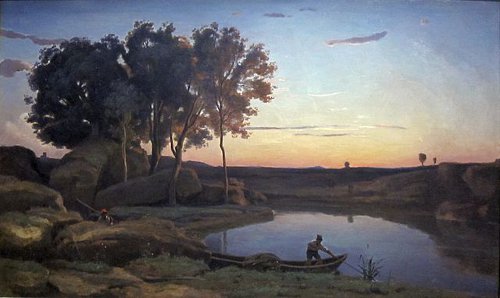
No other painter’s works have been forged as frequently as Corot’s. One day a gentleman shows up in the master’s studio, who, having bought a painting signed ‘Corot’ in a small art shop, wants to know whether it has really been painted by Corot. After one brief look at the canvas Corot shakes his head. Transported by rage, the buyer declares that he will report the art dealer to the police. ‘Report to the police?,’ the painter vents his annoyance. ‘Nonsense, that man has a wife and a child. Do you want to ruin the life of that fellow?’ ‘What do I care about wife and child? A fraud is a fraud and the law ….’ ‘The law? Bah, it won’t take much to turn this little painting into an original Corot.’ With that, the master puts the canvas on the easel and adds a few brush strokes, thus turning the fake Corot into a genuine one. ‘There,’ he murmurs in a satisfied voice, returning the painting to the buyer, ‘now you won’t be able to say anymore that this is forgery and fraud. You could see it with your own eyes how I painted it.’
— Alfred Georg Hartmann, Das Künstlerwäldchen. Maler-, Bildhauer- und Architekten-Anekdoten, 1917, quoted in Sándor Radnóti, The Fake: Forgery and Its Place in Art, 1999
The Pyramid Cemetery

In 1830, architect Thomas Willson proposed housing London’s dead in a gigantic pyramid, “a metropolitan cemetery on a scale commensurate with the necessities of the largest city in the world, embracing prospectively the demands of centuries, sufficiently capacious to receive 5,000,000 of the dead, where they may repose in perfect security, without interfering with the comfort, the health, the business, the property, or the pursuits of the living.”
Willson’s necropolis would have covered 18 acres but would consolidate graves that would require 50 times that space in a conventional graveyard. With a base the size of Russell Square and a height greater than St. Paul’s, its granite-faced bulk would surpass the great pyramid of Giza. Through an Egyptian portal visitors would enter a surrounding enclosure decorated with statuary, cenotaphs, and monuments, as well as a chapel, a register office, and dwellings for the keeper, the clerk, the sexton, and the superintendent. They could ascend any side of the pyramid by a vast flight of stairs, at the top reaching an obelisk crowned with an observatory.
“This grand mausoleum,” Willson announced, “will go far towards completing the glory of London. It will rise in majesty over its splendid fanes and lofty towers,–teaching the living to die, and the dying to live for ever.” The cost he estimated at £2.5 million, but with 30,000 interments per year at £5 each, the pyramid would bring in £150,000 per year, saving £12.5 million over the course of a century in a project whose necessity, sadly, was certain to endure.
“However, the pyramid cemetery, instead of rearing its gloomy mountain-side into the clouds, and casting the shadow of death over every part of London in succession in the course of the day, exists only upon paper,” runs a contemporary report. “The dividends were too remote, and joint-stock people would not wait one hundred years for one hundred per cent.”
(Thanks, Ron.)
Black and White
Character Study
There is a game — in the 1950s it used to be played by members of the Iowa Writers’ Workshop — called ‘Smoke.’ It works as follows. The player who is ‘it’ chooses some famous person with whom everyone playing is surely acquainted (Harry Truman, Marlon Brando, Chairman Mao, Charles DeGaulle, for instance) and tells the other players, ‘I am a dead American,’ ‘I am a living American,’ ‘I am a dead Asian,’ ‘I am a dead European’; and then each of the other players in turn asks one question of the person who is ‘it,’ such as, ‘What kind of smoke are you?’ (cigarette, pipe, cigar — or, more specifically, L&M, Dunhill, White Owl) or ‘What kind of weather are you?’ ‘What kind of insect are you?’ or ‘What kind of transportation?’ The person who is ‘it’ answers not in terms of what kind of smoke his character would like, if any, but what kind of smoke he would be if, instead of being human, he were a smoke, or what kind of weather, insect, transportation, and so forth, he would be if reincarnated as one of those. Thus, for example, Kate Smith if an insect would be a turquoise beetle; Marlon Brando, if weather, would be sultry and uncertain, with storm warnings out; and as a vehicle of transporation Harry Truman would be (whatever he may in fact have driven) a Model T Ford. What invariably happens when this game is played by fairly sensitive people is that the whole crowd of questioners builds a stronger and stronger feeling of the character, by unconscious association, until finally someone says the right name — ‘Kate Smith!’ or ‘Chairman Mao!’ — and everyone in the room feels instantly that that’s right. There is obviously no way to play this game with the reasoning faculty, since it depends on unconscious associations or intuition; and what the game proves conclusively for everyone playing is that our associations are remarkably similar. When one of the players falls into some mistake, for instance, saing that Mr. Brezhnev of the U.S.S.R. is a beaver instead of, more properly, a crafty old woodchuck, all the players at the end of the game are sure to protest, ‘You misled us when you said “beaver.”‘ The game proves more dramatically than any argument can suggest the mysterious rightness of a good metaphor — the one requisite for the poet, Aristotle says, that cannot be taught.
— John Gardner, On Moral Fiction, 1978
A Letter Home
Young telegraph operator Joseph Orton Kerbey was enlisted as a spy for the federal forces during the Civil War. In 1861, laid up in a sick bed in Richmond, he needed a way to communicate his latest discoveries to his friends in the north. The message would have to appear innocent and contain the key to its own decipherment. Here’s what he sent:
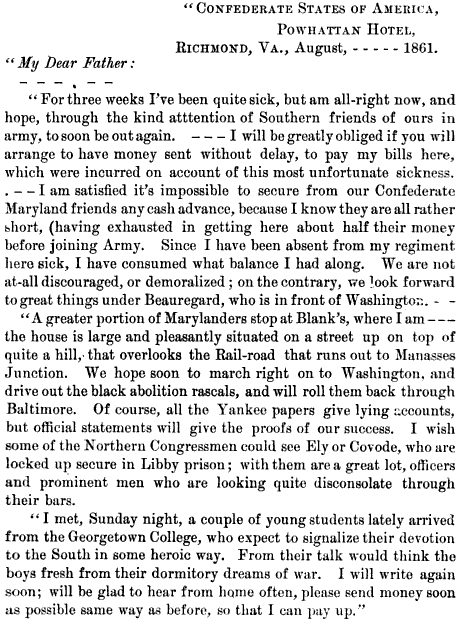
He directed it, not to his father’s name and address, but to a friend in the telegraph office at Annapolis. What was the hidden message?
In a Word
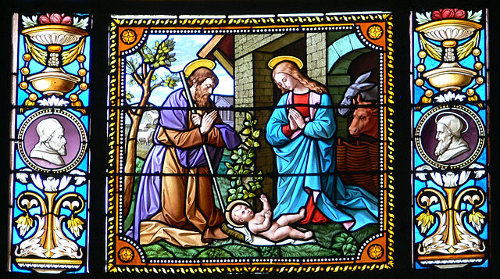
nullipara
n. a childless woman
vagitus
n. a newborn child’s cry
deiparous
adj. giving birth to a god

